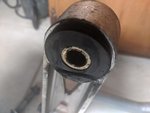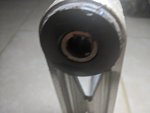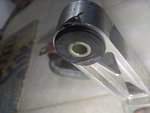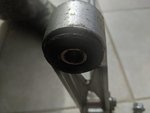- Thread starter
- #41
You'll have to run a level up against the tire and measure between that and the fender with a small scale. If both tires are outside the fenders, you've got a wheel offset or possibly a width issue that needs to be fixed in addition to the axle centering.
If only one tire is outside and the other tire is inside, add the inside amount to the outside amount and divide that by two. Ex., left tire 1" inside with right tire 1/2" outside means the axle needs to move 3/4" to the left (lengthen the PHB by that amount and recheck).
Norm
I attempted to adjust my panhard bar but it's seized. I got a good deal on a steeda Watts link kit and lightweight radiator support.
I'm guessing I can choose one of these options next.
1. Reinstall panhard bar for now. Buy Ford p springs to replace the eibach pro springs. Maybe the springs have gone soft or are too soft from production.
2. Replace all wheels with 19s and 285 35 19. This is the most expensive option.
3. Wait for the watts link to arrive and install that.
4. Buy Ford p springs and install, install watts link, install steeda bumpsteer kit I have on the shelf and take car for an alignment at one time.
The rear tires are rubbing on the fenders on big bumps, they are the American racing supersnakes wheels so obviously designed for the mustang but with the backspacing I believe no bigger than 285 were supposed to go on them.
The bumpsteer kit is spherical ends, I do not want more nvh and the car is not tracked so should I avoid installing the bumpsteer kit completely?
I need to get to the bottom of this soon as it's ruining the ownership experience. My daily driver is a 200,000 mile Cruze Eco which I've owned since new on factory suspension, the ride is sublime in comparison. I need to get back to what it was or just start new with another performance car. Obviously I have so much money and time invested in my Mustang I don't want to do it again.

















